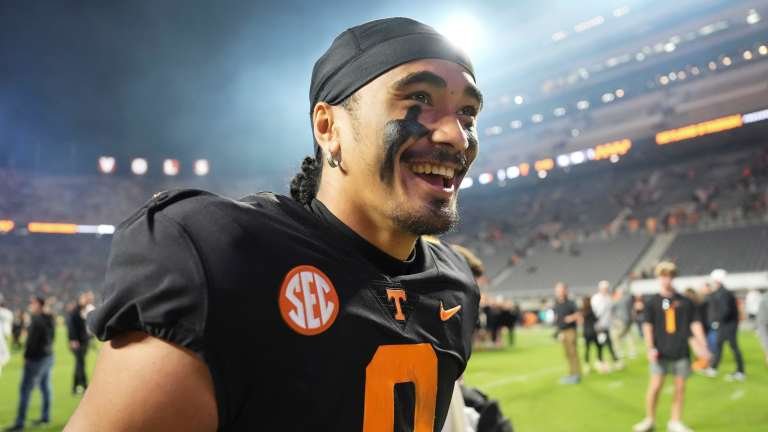 Tennessee Volunteers quarterback Nico Iamaleava, who signed an NIL deal in 2022 for more than $2 million a year, is looking for an increase.
Tennessee Volunteers quarterback Nico Iamaleava, who signed an NIL deal in 2022 for more than $2 million a year, is looking for an increase.
The landscape of college football has undergone a seismic shift with the introduction of NIL compensation. Student-athletes can now profit from their fame, but the lack of clear contracts and guidelines has created a complex and often confusing environment. As NIL deals continue to flow, questions arise about the direction of college athletics.
With millions of dollars changing hands, it’s time to examine the current state of NIL in college football and explore the need for standardized contracts and guidelines. In this article, we’ll delve into the opportunities and challenges presented by NIL and discuss the importance of establishing clear rules to protect athletes, schools, and the integrity of the game.
Since signing his NIL deal in 2022, Iamaleava has seen the money skyrocket recently. Arch Manning of Texas reportedly has an NIL evaluation of $6.5 million, LSU quarterback Garrett Nusmeier’s NIL money is an estimated $3.6 million, and Carson Beck (Miami) and Darian Mensah (Duke) are also close to $4 million.
Iamaleava is seeking his new deal before the transfer portal window opens on April 16. After a redshirt season in 2023, Iamaleava stepped in as the starter last season for the Volunteers.
The Wild West of modern-day college football is not breaking news to fans. However, the powers that be desperately need to put guidelines and contracts in place.
Undoubtedly, student-athletes deserve a piece of the pie since they are the ones making all the money for the universities to make millions of dollars and coaches to be paid in the millions. They also need some common sense and clarity put in place. Otherwise, by the way it’s going, college football will have constant free agency.
Maybe they also need to set up some bonus structure based on performance. After all, can we expect these boosters and donors to continue to increase their donations? At some point, it just becomes professional sports.
There is also a considerable gap between the number of players making big money and those who make little or nothing. Not everyone will make it in the NFL or even the UFL. Education is key for most college athletes’ post-college life.
Many players’ only goal is to go to the NFL. They’re in college to play football, not open the books. Maybe the players should have to pay back a portion of their NIL money if they transfer within a specific timeframe. Or the players making the big bucks should pay for their own education, especially since they are not taking advantage of it anyway.
If players start renegotiating every year before the transfer portal opens, the Wild West will kill college football.
We’ve already seen teams drop divisions because of how the landscape has changed. A great example of this is what happened recently in college basketball. Saint Francis University (Pa.) played in the NCAA tournament but then announced it would drop to Division III due to challenges of sustaining a Division I program at its size and location.
College football is different and a school the size of Saint Francis wouldn’t be on the big-time college football map, but that scenario, and many others, will become more commonplace if a group isn’t put in place to get a hold of the potential pitfalls of NIL.
The NCAA failed even before the NIL era, and a more modern approach is needed. Otherwise, the Wild West of college football will get even stranger.